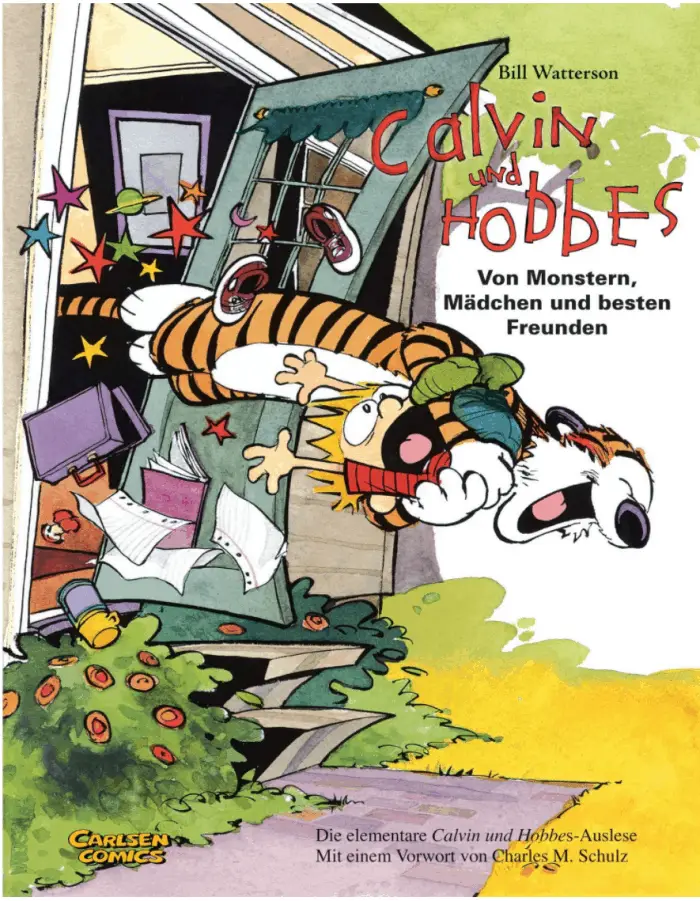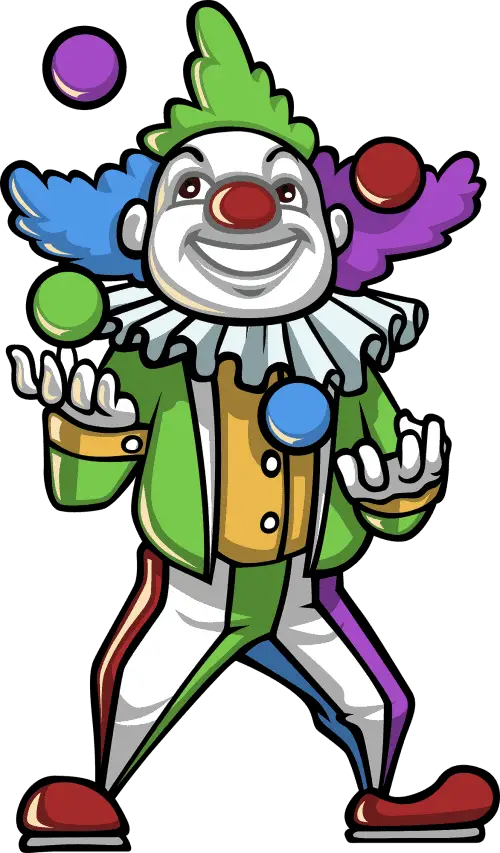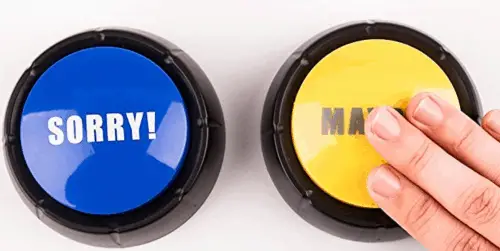
Most teachers strive to create a classroom that promotes learning as fun. But what’s the best way to bring humor into the classroom? After all, algebra still has to be taught!
A guide to bringing humor into the classroom to promote learning includes three simple, but effective tips: teachers should incorporate humor regularly in their content lessons; keep a sense of humor in their approach; and last, set up the classroom in a flexible way that encourages levity.
I’ve had my fair share of stereotypical mean teachers growing up. As a retired public school teacher, I’ve worked with a few meanies too, unfortunately. From my experiences over the many years, I’ve figured out that the best way to promote learning and reduce classroom management issues is humor in the classroom. I’m happy to reveal what I’ve learned about bringing humor into the classroom with this guide below!
Contents
Why Teachers Should Bring Humor into the Classroom
Bringing humor into the classroom is not only natural for learning, but also backed by science.

People have learned through common interactions that humor is an effective tool to lighten the mood in casual encounters, as well as ‘break the ice’ in awkward situations. It only makes sense that teachers rely on humor in the classroom. However, there is plenty of research to back that up, too.
Educational neuroscience consultant and researcher, David A. Sousa, author of How the Brain Learns (5th edition available on Amazon), has shown in his studies that humor has positive effects on the brain, making it a suitable tool to use in instruction, especially in upper grades where he concentrated his focus.
Some of the physiological effects are the endorphins that are released from laughter, as well as more oxygen that floods the bloodstream, which is good for the brain.
The release of endorphins and the presence of more oxygen-rich blood also results in reduced stress, relaxed muscles, and even a boost in immune defenses, according to Sousa, all of which set the body up physically for learning.
To restate it bluntly, humor (i.e. laughter) makes students more receptive to learning new skills.
That is, as long as the humor is actually perceived as humorous. If joking becomes intrusive and breaks the flow of the lesson too much or the humor is off color or offensive, obviously it can be a detriment rather than an aide.
In this respect, other research cautions that humor has the power to either lower OR raise the affective barriers to learning. Perception is key!
There is also the problem of students attempting to join in and the environment turning from one of learning to ‘dueling comedians’ trying to command the attention of the captive audience. All of these should be guarded against, but that shouldn’t stop the attempts at humor altogether.
Bring Humor into Your Lessons
What’s the missing feature in almost all college and university teacher prep programs across America? The lesson on humor in the lesson plan is what!
Teachers learn universal lesson plan features in their teacher prep courses such as the ‘hook’ or activator to get students attention; the objective of what you’re trying to teach; the application where students get to ‘apply’ or practice what they’re learning in a low stakes manner; and the wrap up or summation of the lesson.
Cutesy terms such as warm-up and cool-down and exit tickets are used, but speaking as someone who’s taught in multiple states and four different school divisions, I can say all well-made lesson plans essentially contain the same features: teachers introduce the skill, teachers teach the skill, and then, teachers provide students a way to practice the skill.
If prep programs included instruction on how to provide humor in the lesson plan, it would set teachers and students up for a higher probability of learning, as well as up for a much better time while doing it!
A few ways I’ve learned (from pure trial and error) to bring humor into my instruction are through specific content ties, adding jokes of the day, and humorous videos whenever applicable.
Content Humor
Whether you are teaching elementary science or high school geometry, it’s possible to bring humor into your content area. I’ve seen teachers use Pokémon and SpongeBob in their math word problems and teach Spanish vocabulary through translating comic strips. It’s possible, as long as you are creative!

As a homeschool mom also, my kids used Calvin and Hobbes in German (we purchased from Amazon) in their foreign language learning. We also watched Seinfeld and The Office episodes in German. This is something that can easily be done in high school courses.
As long as you are open, you can include humor in your subject-matter. This doesn’t mean you are changing your content objectives. It also might mean, however, that you have a bit more work on the front-end since you aren’t relying on generic workbooks and textbooks for the bulk of your material.
But once you’ve garnered your items, you’ll be able to reuse a lot of it. Humor doesn’t go out of style. What was funny five years ago is still typically funny today!
Jokes of the Day

To start my lessons, I added a joke feature. This isn’t part of the official lesson planning but I added it anyway and my administrators certainly didn’t mind! I’d bring my third graders to the carpet and begin with a ‘knock, knock’ and would immediately have their attention. For high schoolers, you can write the joke on the board-omitting the punchline, of course. That should come later-if they don’t guess it right away!
An easy way for me to find my jokes was by collecting popsicle sticks (you know, those popsicle brands that put jokes on the sticks). I purposely bought that particular brand, and my kids (and husband) ‘took one for the team’ by eating the popsicles and saving the sticks with jokes for me. Of course, we’d first share the jokes with each other at home, because humor at home is also a very good thing!
You can keep a canister in the front of your classroom to hold your joke sticks-if you choose to follow this suggestion. This way the jokes can be easily accessible for both you and the kiddos.
Another way to find jokes is simply purchasing joke books for kids (so they’re school-appropriate) or searching on the internet. We have several joke pages on our site here. A popular page is our Peanut Butter and Jelly Jokes.
Sometimes the jokes will connect to the actual objective, but other times, they will just serve as a fun way to start the lesson on adverbs, fractions, erosion…whatever. Basically what I’m saying is, it really doesn’t matter. Kids love jokes!
Incorporate Humorous Videos
With the advancements in technology and the prevalence (and actual promotion) of its usage in the classroom, it makes perfect sense to incorporate funny videos when possible to add humor in your instruction.
You can easily search for funny video clips on YouTube for your purposes. For example, if I was teaching about word problems, I could type ‘silly word problems’ in YouTube and find a plethora of clips to use; some even had Weird Al Yankovic, guaranteed to make kids laugh!
Another possibility with videos is to use funny movie clips. For example, you can use clips of SpongeBob Squarepants or Friends episodes, depending on your student age group, to connect with your lesson plan.
It takes a bit of creativity and extra time, but in the long-run, I’ve found it quite invaluable adding extra touches to lessons to make them fun and memorable for students!
Bring Humor to Your Approach
I’ve also learned over the years that it’s not about being a comedian in the classroom. It’s more about just having a sense of humor! (I’ve written about the importance of teacher’s having a sense of humor in another article specifically.)
In a nutshell, we as teachers and even parents need to take ourselves a little less seriously. There shouldn’t be a fostering of a lack of respect, but enjoying hearing and seeing intelligent humor and sometimes being its author is a great trait to have.
Importance of Teachers’ Sense of Humor
Teachers don’t have to be class clown to have a sense of humor in their approach. There are a couple of ways that teachers can do this.
One, teachers should try not to take everything so seriously. Don’t look for arguments with students or take it personally if students don’t do homework, for example. Instead, just simply move on. And maybe make a silly face or exaggerated groan while you do it! This lets your students know that you are multifaceted and real. You’ll be surprised at how much this reaction will help in bringing humor into the classroom!
Second, surprise your kids. Don’t always be so rigid. If things don’t work out a certain way, your laptop dies, or you forget your lesson plans, you can still go on! It may seem to go against the standard teacher-nature, but learn to just go with the flow. Flexibility is necessary for having a sense of humor in your approach.
Last, have an overall joking attitude. This, again, doesn’t mean you have to be a class clown! Yet, a smile on your face, a laugh now and then, and just being plain ol silly are okay. It lets your students know that you are relatable.
Out-of-the-Box Thinking

It’s easy to get stuck in a rut as a teacher. Teachers also don’t want to reinvent the wheel, so to speak, so most times teachers are ‘teaching’ the same material day after day, year after year.
Avoiding the idea of re-doing lesson plans over and over, there are still ways to spice up instruction or make lessons fun.
Try thinking out-of-the-box when you approach your teaching.
You can change the scenery a bit. Move the classroom outside or into the hallway. I once took my class outside to do their writing. It was a nice sunny day, and proved to be a great change of pace. It didn’t cost me anything, either-except some out-of-the-box thinking!
Another way to spice it up, think out-of-the-box, and show you have a sense of humor is to invite guest teachers. You can have a friend or spouse come in to read to your students or go all in, and be ‘teacher for the day’. If there’s a professional connection, call up someone from the community to come in.
But keep in mind, the guest doesn’t necessarily have to be professionally connected to the lesson, either. The main take away here is that it’s good for students to see their teachers interact with others; it shows that teachers are real, relatable, and have a sense of humor.
Bring Humor to the Environment
We don’t spend a lot of time on classroom arrangement and décor in teacher prep programs, either. However, the classroom setting is actually quite influential in learning. Classroom set-ups can encourage humor, or discourage it.
This can also apply to temporary modifications or even stunts. One thing that some teachers have tried successfully is playing with the seating or even eliminating it for a time. Have all students stand, sit on the floor, walk or even just rotate to different parts of the room surprisingly can bring on a lot of fun and even giggles throughout the day.
The Classroom Set-Up Can Show Humor
In TV and film, school classrooms all look the same. They either show students in a well-stocked lab classroom with black table-tops and stools, along with beakers, Bunsen burners, and a teacher in a white coat OR they show an English class arranged in perfect rows with no more than 20 kids and a cool, hip teacher sitting on top of his desk reciting poetry from memory. But we know that’s an illusion.
Classrooms are messy with paper on the floor and dusts on the blinds; desks are mismatched; and the teacher is often frowning while gazing at 30 plus students looking bored. And I admit, I speak from experience as both a student and the teacher (sigh).
But I learned, and so can other teachers, that one way to evoke a sense of humor into the classroom is through the set-up…and it doesn’t have to cost an arm and a leg!
Whether you teach 3rd grade or 12th, it is possible to set up your classroom to encourage humor.
- In my high school classes, I arranged desks to face inward to provide for easier instruction; I put up fun posters around the room; and added a quotes & jokes spot to the board.
- In my elementary rooms, I used flexible seating (purchased from grants and just using things brought from home) to create a casual, fun atmosphere.
- Allow your students to get involved, too! You’d be surprised by the innovation and fresh approach they can bring. Plus, you might snag some cool items for your classroom to use long after students move on!
You don’t have to spend a lot of money but simply arranging the space in a nontraditional way, you can show your students that you have a sense of humor.
Props are Funny

Props are a great, concrete way to bring humor into the classroom! I loved using ‘answer buttons’ in the classroom. Instead of responding, yes/no/maybe/sorry and so on, you can press the answer button. Even better, your students can press it. This works really well when you have students ask ridiculous questions. Your other students will relish getting to press the answer button as a response!
You can also incorporate silly props like Amazon’s Don’t Bother Me hat or dress up depending on holidays. I always dressed up on school spirit days, too.
Many teachers incorporate their fav sports into their classroom, decorating with memorabilia, to show their fun side.
Another way I showed my sense of humor in my classroom environment was by putting sunglasses on a stuffed tiger (our school mascot), as well as sticking Dollar Store googly eyes everywhere (literally demonstrating, “I have eyes everywhere!”)

Punchline for the Guide to Bringing Humor into the Classroom
So to recap: it is possible for teachers to bring humor into their classroom, and not too complicated at that! Just follow this simply guide.
To do this, teachers should:
- deliberately include humor in their lessons
- keep a sense of humor in their approach
- and last, set up their classroom in a flexible way that encourages levity
Humor in this way is something that can be learned and developed with practice. Different teachers will have their own personalities and can adapt these tips to suit their needs. All it takes is a little effort and a bit of trial and error.
I hope you’ve enjoyed my revelation from 18 plus years experience as a teacher on how to bring humor into your classroom!
